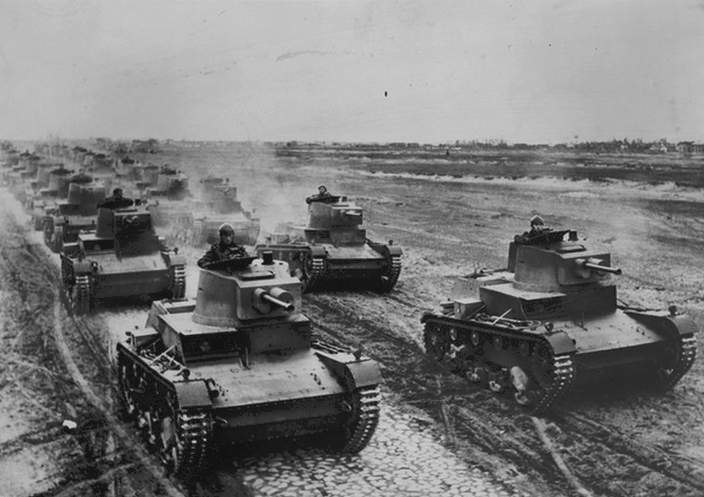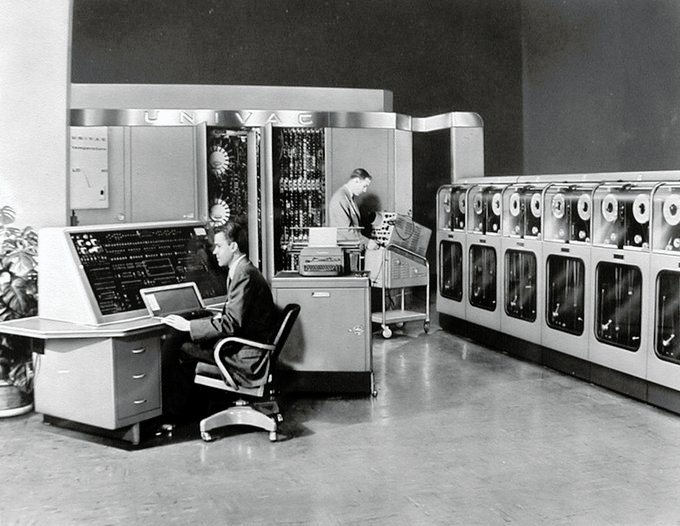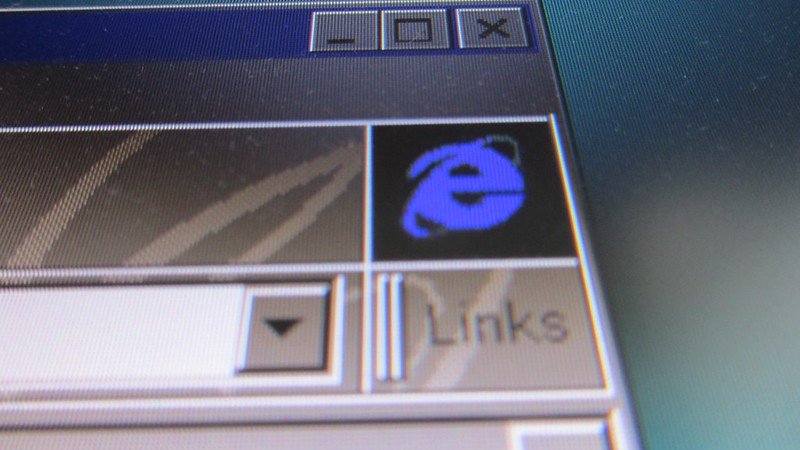The Interface Message Processor (IMP) was a groundbreaking network computer that became the heart of the original ARPANET – the precursor to today’s Internet. Developed in the late 1960s, each IMP served as a dedicated packet-switching node connecting one host computer (such as a university mainframe) to the ARPANET. In practical terms, an IMP acted as the first generation router: a small, rugged minicomputer that routed data packets between distant computers. This architecture allowed different computer systems to talk to each other over a national network. By separating the IMP computer from the host, early engineers created a universal interface that unified a wide variety of hosts.
At each ARPANET site, the IMP sat between the host computer and a leased telephone line. It provided error-corrected, store-and-forward communication, ensuring reliable delivery. When the ARPANET went live in 1969, its four founding nodes were linked by IMPs. Over time the network grew to connect dozens of research centers and universities. The concept of the IMP – often called the first Internet router – lives on today in every modern router and gateway. In this post, we trace the ARPANET history and explain how the IMP’s design and development shaped modern networking.
Table of Contents
ARPANET Origins: The Packet-Switching Revolution
To understand the IMP network and its significance, we must first look at ARPANET history. In the early 1960s, computers were isolated, large mainframes. U.S. defense researchers, worried about robust communications, imagined a network that could survive failures. The idea of sending data in small chunks (packets) through multiple routes was proposed independently by Paul Baran (in the U.S.) and Donald Davies (in the U.K.) in the mid-1960s. This packet switching concept allowed efficient, resilient communication over disparate lines, unlike traditional telephone networks that used fixed circuits.
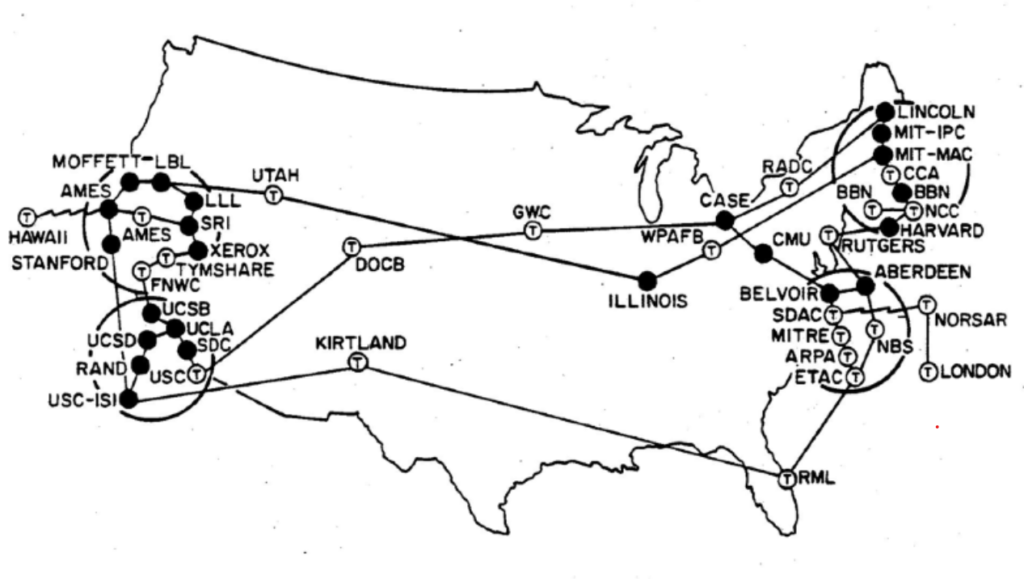
By 1966, the U.S. Department of Defense’s Advanced Research Projects Agency (ARPA) started funding a packet-switched network called ARPANET. One of ARPA’s goals was to allow researchers to share computing resources across the country. Computer scientists like J.C.R. Licklider had earlier envisioned an “Intergalactic Computer Network,” and ARPA’s program built on those ideas.
Early ARPANET architects decided that rather than build one giant computer, they would link existing computers with a new kind of interface machine. In April 1967, at a principal investigators meeting in Ann Arbor, Michigan, researcher Wesley Clark suggested the key idea: each site would use a small dedicated computer – an interface message processor – to connect to the network. This way, each host only needed to talk to its local IMP rather than to each other host.
Wesley Clark’s suggestion turned ARPA’s networking plans inside-out. Instead of forcing each computer to implement its own complex network software and connect to multiple other machines, ARPA embraced a uniform intermediary device. By separating the host from the network logic, ARPANET could support many different host computers with a single standard interface. This concept – an independent network node that handled communications – became the cornerstone of the project. (Coincidentally, Donald Davies’s team at the U.K. National Physical Laboratory had already been working on packet-switching routers, and ARPA’s design paralleled those innovations.)
Within months of this meeting, ARPA moved ahead. In late 1967, it contracted the Stanford Research Institute (SRI) to write detailed design specifications. By early 1968, Lawrence Roberts of ARPA and colleagues had drafted final technical standards. Among these was a host-to-IMP interface specification (later known as BBN Report 1822) and the concept of network control programs that would run on the IMPs. In July 1968, ARPA’s funding office (IPTO) issued a Request for Quotations to build the IMP. By December 1968, ARPA awarded the contract to Bolt, Beranek and Newman (BBN) of Cambridge, Massachusetts.
Concept and Development of the IMP (1967–1969)
After winning the contract in late 1968, BBN Technologies assembled an engineering team to build the Interface Message Processor. The team was led by electrical engineer Frank Heart, with key members including computer specialist Robert Kahn (later co-inventor of TCP/IP), hardware lead Severo Ornstein, and programmers such as Will Crowther, Bernie Cosell, and Dave Walden. Their task was to turn the design specifications into a working network computer.
BBN’s designers chose the Honeywell DDP-516 minicomputer as the core of the IMP. This was a 12-bit word machine with only 12 kilobytes (12,288 bytes) of magnetic core memory – tiny by modern standards. However, the DDP-516 was ruggedized for military use, meaning it could survive tough conditions and continue running reliably. BBN added custom interface hardware: multiple analog-digital modem interfaces for the phone lines, and one or more host interfaces for connecting to the local mainframe. They developed the packet-switching software from scratch, implementing error checking and the “store-and-forward” logic to route packets across the network.
In April 1969, BBN finalized a key document called Specification #1822 (later published as BBN Report 1822). This defined the physical and data link layer between a host and its IMP. A simplified version of the host protocol was later published as RFC 1 in 1969. In practice, each host computer had a custom bit-serial interface card that obeyed the 1822 protocol. The host would hand off an entire message packet to the IMP, and the IMP would acknowledge receipt.
Then the IMP took responsibility for sending the packet on into the IMP network (the ARPANET backbone). Once the destination IMP got the packet, it passed it up to the target host. If any IMP encountered trouble delivering a packet, it would notify the sender.
BBN’s team also built robustness into the design. The IMPs used a message forwarding scheme that ensured reliability: an IMP would not erase a packet from its memory until it received confirmation from the next IMP that the packet was received. In this way, packets were guaranteed to eventually reach their destination (or generate an error report). The Honeywell DDP-516 could sustain a moderate packet throughput given its era – the entire ARPANET initially ran at about 50 kilobits per second (a common leased-line speed at the time). Each message packet could be up to 8159 bits long (including a 96-bit header).
BBN’s IMP design allowed each node to connect up to six other IMPs. This meant each router could have multiple telephone circuits to neighbors, forming a mesh of network paths. Early ARPANET sites typically had 2–4 link ports, connecting to nearby nodes. This flexible design meant the network could grow beyond a simple chain or ring. (In fact, ARPA initially connected only three sites in California and one in Utah to start.) Because each IMP was an independent computer, new IMPs could be added for additional sites without redesigning the network.
BBN Technologies and the IMP Development Team
Bolt, Beranek and Newman (BBN) was a research and development firm with experience in networking. J.C.R. Licklider – who had championed ARPANET in earlier memos – was an alumnus of BBN. The BBN team built the IMPs under a tight schedule. The initial delivery plan was ambitious: four IMPs were to be delivered to UCLA, SRI, UCSB, and Utah by 1969, roughly one month apart. Massachusetts Senator Ted Kennedy famously joked about BBN’s contract – after hearing “Interface Message Processor,” he congratulated them on the “interfaith message processor” deal. But BBN engineers got to work seriously.
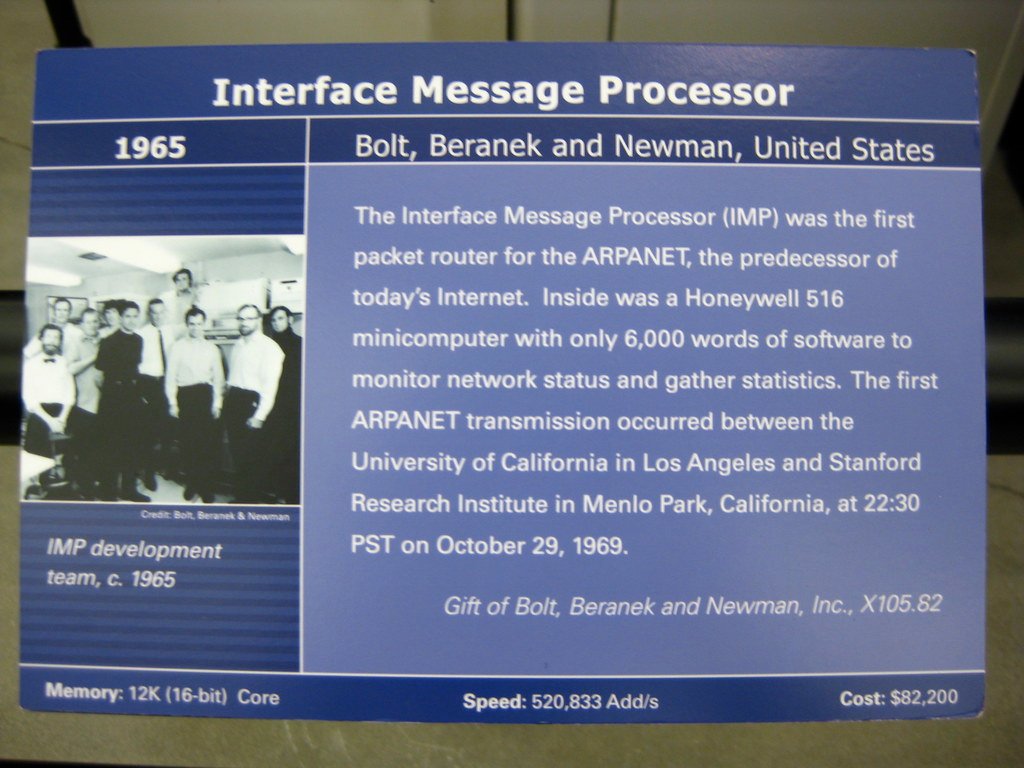
- Frank Heart (Project Leader) oversaw the engineering of the IMP’s hardware and real-time software.
- Robert E. Kahn (Communications Theoretician) designed the communications architecture; he later co-created TCP/IP.
- Severo Ornstein (Hardware) built the custom modem and interface electronics.
- Ben Barker (Hardware) worked on the electronic systems.
- Will Crowther and Dave Walden (Software) wrote the packet-switching code.
- Bernie Cosell (Software) contributed to the host interface and testing.
The team worked in parallel on hardware boards and software code. They ruggedized the DDP-516 with custom chassis and power systems. They wrote the IMP’s operating software in assembly language, handling interrupt-driven I/O from modems and hosts. Extensive testing took place on simulated links. BBN engineers even created a miniature network simulator that emulated multiple IMPs to debug their code before the real hardware was connected.
By late August 1969, BBN was ready to deliver the first IMP. Packing one of these minicomputers – bulky even by 1960s standards – onto an airplane was an event: the unit had to be treated like delicate scientific equipment. On August 30, 1969, BBN handed over IMP #1 to UCLA. The piece of history that day was not obvious to the casual observer: a Honeywell box, a dozen circuit boards, and blinking lights – but it was the first piece of the ARPANET puzzle.
IMP Hardware and Network Architecture
The IMP computer was a purpose-built mini-computer with special interfaces. At its heart was the Honeywell DDP-516 12-bit CPU, running at a few hundred thousand instructions per second. It had 12K words of core memory for program and packet buffering. The machine was ruggedized: the electronics were mounted in a shock-absorbing frame, with ample cooling and backup power to prevent data loss.
Attached to the DDP-516 were several custom boards:
- Host Interface: This used the ARPANET’s unique 1822 protocol. It connected the IMP to a host computer via a serial link (at 50 kilobits/sec). The host’s interface card would load an entire message word-by-word into the IMP, along with a destination address.
- Modem Interface(s): Each IMP had one or more analog-digital modem ports. These modems connected to the dedicated telephone lines leased from AT&T. The line speed was typically 50 Kbps in the beginning. The modems converted digital packet bits from the IMP into analog signals for the line, and vice versa.
- Interrupt Controller and DMA: To handle high-speed I/O, the IMP used direct memory access (DMA) hardware. Incoming packets would be moved into memory with minimal CPU intervention.
- Printer/Console Interface: For debugging and logging, IMPs had a console printer and lights. Engineers could read status and debug info directly on site.
Each IMP had up to six ports for neighbor links. In practice, a typical four-node ARPANET used just one or two links per IMP (forming a kind of mesh). For example, the UCLA IMP had a link to SRI’s IMP and to UCSB’s IMP. Within the network, each IMP maintained a routing table of neighboring IMP addresses. When a packet arrived, the IMP’s software looked at the destination and decided which line to forward it on. If the destination was local (its own host), the IMP delivered it immediately. If not, the packet was buffered and sent to the appropriate next-hop IMP.
All ARPANET communications were packet-switched. A host-to-host message (like an email or a login command) was broken into fixed-size packets of up to ~8000 bits. Each packet contained a header (with source and destination host addresses, a sequence number, etc.) and data. The IMP’s software made sure that packets left the IMP one at a time and each was acknowledged by the next IMP. If an acknowledgement did not arrive (for instance, due to line noise), the sending IMP would retry the transmission. This technique ensured reliable delivery over the noisy early lines.
One can think of the IMP as a prototype router. Unlike modern routers that use complex microprocessors, the IMP used a simple minicomputer. But conceptually, it had all the router functions: it sat at a network junction, received data from one side (either the host or another IMP), and forwarded it to the other side. It used addressing, maintained state for in-transit packets, and provided diagnostics. In fact, ARPA later noted that the IMPs were the first generation of “gateways” (the contemporary term), which we now call routers.
Key Features of the IMP Hardware
- Honeywell DDP-516 Minicomputer: A 12-bit CPU with 12K core memory. Ruggedized for reliability.
- Custom I/O Boards: Dedicated modem controllers and 1822 host interface cards.
- Packet Memory Buffers: The IMP could queue several packets in memory while forwarding.
- Line Speed: Initial links ran at 50 kilobits per second (set by ARPA’s 1967 conference decision).
- Multi-port Connectivity: Up to six telephone-line ports, allowing flexible network topology.
- Reliability Mechanisms: Hardware watchdogs and automatic retries ensured minimal downtime.
Even with these features, the IMP was modest. Its 12K of memory is laughably small now (today’s smartphones have millions of times more RAM). The CPU could only process a few thousand packet operations per second. But it was enough to handle the light load of the early ARPANET. As demand grew, the IMP design would evolve, but the original Honeywell DDP-516 was remarkably successful for many years.
Deploying the First IMPs: Early ARPANET Nodes (1969–1970)
The first four ARPANET sites were chosen in 1969. These became the early internet nodes connected by the inaugural IMPs. According to the schedule BBN and ARPA set, one IMP was delivered approximately each month starting in August 1969:
- August 30, 1969: IMP #1 arrived at the University of California, Los Angeles (UCLA). It was connected to an SDS Sigma 7 host computer operated by Professor Leonard Kleinrock’s team. (The Sigma 7 ran the SYSV or “SEX” operating system for networking experiments.)
- October 1, 1969: IMP #2 was delivered to the Stanford Research Institute (SRI) in Menlo Park, California. SRI’s host computer was an SDS-940 under the Genie operating system, run by Douglas Engelbart’s research group.
- November 1969: IMP #3 went to the University of California, Santa Barbara (UCSB).
- December 1969: IMP #4 was installed at the University of Utah.
By late 1969, all four IMPs and hosts were ready for networking. The teams at UCLA and SRI began testing the connection. On October 29, 1969, history was made. A UCLA student (Charley Kline under Kleinrock’s supervision) attempted to log in to the SRI machine. He typed “L-O-G-I-N” on his terminal, but the SRI computer only received “L-O” before the system crashed. Undeterred, the engineers diagnosed the problem (a software bug) and fixed it within minutes. Later that night, they retried and successfully sent “LOGIN”, marking the first successful message over the packet network.
The initial communication was slow and error-prone by today’s standards. Packets had to be acknowledged hop-by-hop, and the lines were only 50 Kbps. But the fundamental idea proved sound. After October, the teams stabilized the link between UCLA and SRI. The first permanent ARPANET circuit was placed on November 21, 1969, connecting those two nodes. By early December, the new IMPs at UCSB and Utah were connected (UCSB joined on Dec 5, 1969, with Utah following). Together, these four nodes formed the complete initial ARPANET.
The very first ARPANET “network” – in effect, the first Internet – was thus an IMP-based mesh of four routers linking four different computers. The hosts were all mainframe computers at research sites, and the IMPs were the four network routers at each site. In the next year, ARPANET expanded beyond California and Utah. More universities and labs were added monthly. By 1971, ARPANET had about 15 nodes. Locations included BBN in Massachusetts, Harvard, MIT, University of Utah (Salt Lake City), Case Western Reserve (Ohio), RAND (California), UCLA (Los Angeles), UCSB (Santa Barbara), SRI (Stanford), and others. Each new host site required an IMP installation.
Timeline of Early IMP and ARPANET Events:
- April 1967: Wesley Clark proposes an “interface computer” at ARPA meeting.
- July–Dec 1968: ARPA issues RFQ; BBN wins contract to build IMP.
- April 1969: Host-to-IMP interface spec (#1822) completed.
- Aug 30, 1969: First IMP delivered to UCLA (host SDS Sigma 7).
- Oct 1, 1969: Second IMP to SRI (host SDS-940).
- Oct 29, 1969: First network message (“LO”) sent from UCLA to SRI.
- Nov 1969: Third IMP to UCSB.
- Dec 1969: Fourth IMP to University of Utah; four-node ARPANET complete.
- 1970–75: ARPANET grows to dozens of sites; reliability and protocols improve.
- Jan 1, 1983: ARPANET switches to TCP/IP protocol (replacing NCP).
- Mid-1980s: ARPANET splits into MILNET (military) and ARPANET (research).
- 1986: NSFNET becomes the new backbone.
- 1990: ARPANET decommissioned; IMPs retired.
Even as the network grew, the role of the IMP was clear. Each IMP was an independent node in the expanding IMP network of routers. They ran the ARPANET protocols (initially the Network Control Protocol, NCP) and handled all end-to-end traffic. As new universities and agencies joined, they ordered IMPs from BBN (or licensed designs) and plugged them into the growing mesh. During the early 1970s, additions included UCSB, Harvard, MIT, BBN, and even international links (in 1973, the University College of London and Norway’s research institute joined via satellite IMPs). Throughout, the design principle held: each site’s host talked only to its local IMP, and the IMPs talked to each other over reliable lines.
How Packet Switching Worked on the ARPANET
A key innovation embodied by the IMP was packet switching. To a general audience, we can explain it simply: When two computers on the ARPANET wanted to send data back and forth, their messages were chopped into small fixed-size packets. Each packet carried not only a chunk of the data but also addressing information (like the network and host addresses). The packet was sent from the host to its local IMP, which then forwarded it toward its destination.
Concretely, suppose UCLA’s computer wanted to send a file to SRI. The file would be broken into packets. Each packet included:
- Source and destination host addresses
- Sequence information (to reassemble in order)
- Error-checking bits (for data integrity)
- The data payload (a piece of the file)
These packets were sent sequentially. The IMP at UCLA accepted a packet, stored it in memory, and then sent it onto the line to the next IMP (e.g., UCLA’s IMP to SRI’s IMP). Each intermediate IMP did the same until the packet reached the destination host’s IMP. That IMP then delivered the packet over the 1822 link to the target computer.
This store-and-forward method had advantages over old telephone-style networks. Because all line segments could be shared among users, packet switching made efficient use of the expensive links. If one route was down, packets could be routed another way (the network was self-healing). In practice, early ARPANET reliability was high. BBN even measured that only about 1 in 20,000 packets had errors, thanks to error-detection and retransmission schemes built into the IMP software. (Nonetheless, engineers carefully designed retry logic and timeouts into the IMP programs.)
The ARPANET’s software also introduced the idea of datagram delivery versus virtual circuit. In ARPANET’s original design, each packet was sent individually without setting up a dedicated path for a session – essentially an early form of a datagram network. Later analysis showed that this worked well enough; it influenced the datagram architecture of the modern Internet.
One technical detail: In ARPANET, the hosts used an addressing scheme (16-bit addresses) that identified destination hosts. The IMPs, on the other hand, were identified by their attached host. So routing used the host addresses and a lookup table in each IMP to decide where to send each packet next. Each IMP maintained a short routing table of neighbor IMP addresses. There was no dynamic routing protocol as we know it today; instead, routing decisions were relatively static or manually configured in the early network.
Reliability was a big theme. An IMP would not consider a packet “sent” until it received an acknowledgment from the next IMP in line. If an IMP failed or if a line went down, the sending IMP would be notified (by the modem or lack of response) and it would report a network error back to the originating host. In practice, ARPANET nodes rarely went down, and the reliability engineering of the IMP helped maintain an uptime that was impressive for its era.
Another innovation was the Terminal IMP (TIP), introduced in 1971. A TIP was essentially an IMP modified to allow human terminals (teletypes) to connect directly to the network, rather than just the mainframe hosts. The TIP (often built on the Honeywell 316) could handle dozens of terminal lines, so a lab or dorm could have many remote users. The TIP extended the concept of network routers to include interactive terminals. In effect, it turned a cluster of local terminals into a virtual host on the ARPANET. This was an early example of what we might now call an edge router or access server.
Evolution of the IMP: Hardware and Software Advancements
As the ARPANET grew through the 1970s, the IMP design evolved. BBN improved the hardware to meet demand and reduce cost. Notably, BBN transitioned from the heavy-duty Honeywell 516 to the smaller Honeywell 316 in later units. The H316 was a 12-bit minicomputer compatible with the 516 at the instruction level but cheaper and smaller. Most late-1970s IMPs used the Honeywell 316 instead of the rugged 516, once ARPA was satisfied that the cheaper machine could handle the traffic.
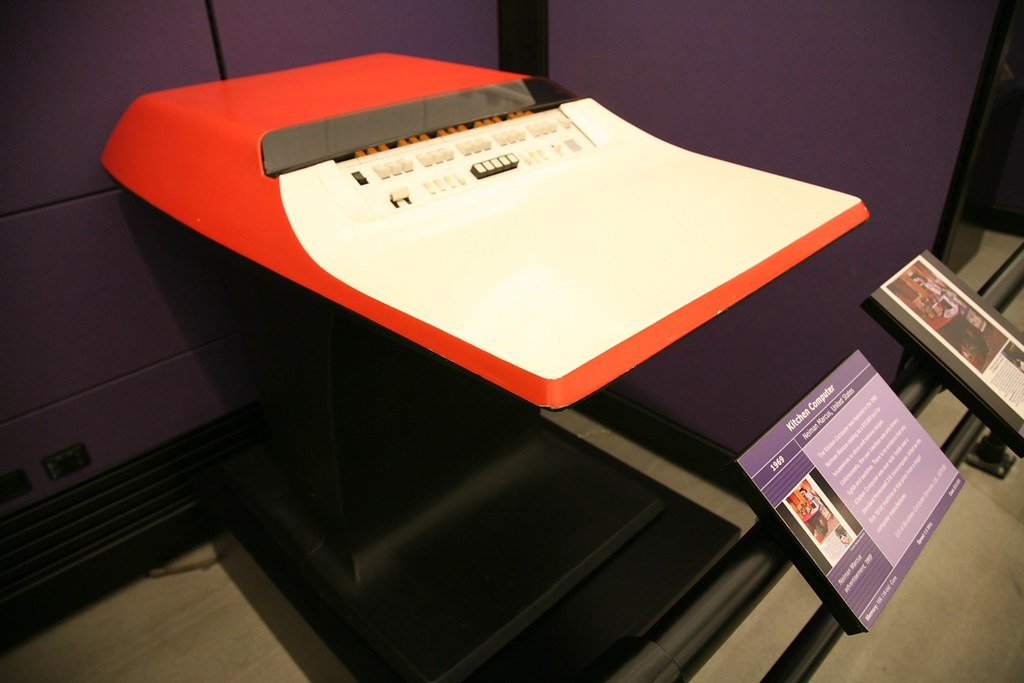
Several specialized versions of the IMP also appeared:
- Terminal IMP (TIP): As mentioned, the TIP supported up to 63 teletypewriters, making it a hub for multiple remote users. It was based on the 316 and included extra multi-line controller hardware.
- Multi-Processor IMPs: BBN eventually developed a multi-processor router called the Pluribus IMP in the mid-1970s. This supported multiple CPUs in parallel to increase throughput. Pluribus could handle many times the packet rate of a single 516.
- BBN C/30: By the late 1970s, BBN created a custom microprogrammed router called the C/30. It initially emulated the Honeywell hardware in microcode, and later versions ran “natively” on faster hardware. Essentially, C/30 was a software re-implementation of the IMP in a custom machine.
Through these changes, the software (the packet-switching code) was ported or rewritten. But the fundamental protocol remained the ARPANET standard. Notably, the host-to-IMP interface (1822) never changed during ARPANET’s life; any new IMP had to speak that protocol to talk to existing hosts.
While technical upgrades happened, the conceptual role of the IMP never changed. It remained a separate machine from the host, handling networking tasks. This separation of concerns foreshadowed the layered architecture of modern networks. We moved from “Host-IMP network” to “Host-IP network,” but the host/network boundary remained.
By the early 1980s, ARPANET was transitioning to TCP/IP. On January 1, 1983, ARPANET converted from the older NCP protocol to TCP/IP. The IMPs had to support the new protocols, which they did by running TCP/IP stacks. Under TCP/IP, the host-to-host protocols changed, but the physical routing of packets by the IMPs continued (now using IP addresses instead of ARPANET addresses).
Eventually, ARPANET itself was split. In 1983, ARPA divided the network into ARPANET (for civilian research) and MILNET (for military). Both used the same IMP hardware, but routes were separated. In the mid-1980s, commercial networks and the NSFNET took over the role of long-haul backbone. By 1989, the ARPANET was largely phased out. The Department of Defense formally decommissioned the ARPANET in 1990. By then, newer routers from companies like Cisco were replacing the aging IMPs at network edges and interconnections.
By the end of its life, many original IMP machines were either donated to museums or simply discarded. A few remain as artifacts (for example, UCLA’s IMP #1 is on display in their Internet heritage collection). But the software and engineering legacy of the IMP lived on in every subsequent generation of routers.
Legacy and Impact on Modern Networking
The story of the IMP is more than a history lesson; its lasting impact is woven into every modern network. The IMP’s design introduced principles and technologies that remain fundamental today:
- Routing Concept: The very idea of a dedicated router connecting networks came from the IMP. Every Internet router today still follows the same basic model of receiving packets on one interface and forwarding them on another. The IMP was effectively “the first Internet router.”
- Standardized Interfaces: By defining a standard host-to-router interface (BBN 1822), the IMP established the importance of interoperability. Modern networks similarly define standard interfaces (Ethernet, Wi-Fi, TCP/IP) that allow any device to join.
- Packet Switching: IMPs demonstrated that packet-switched networks could work at scale. The advantages – efficient link use, fault tolerance, and resource sharing – are the backbone of the Internet and all data networks.
- Protocol Development: Many Internet protocols trace back to ARPANET and the IMP environment. For example, the early development of TCP/IP was done by engineers familiar with ARPANET’s packet model. Email, FTP, Telnet, and other “firsts” emerged on ARPANET. The notion of layering protocols (physical, link, network, transport) was influenced by how the IMP separated concerns.
- Decentralization: IMPs were controlled by local sites, not a central authority. This decentralization was a key feature of ARPANET. Modern network design still values decentralized, distributed operation for reliability and scalability.
- Router Architecture: The multi-port, computer-based architecture of the IMP set a pattern. Today’s backbone routers have dozens of high-speed interfaces and CPUs/ASICs to forward packets. The evolution from IMP (6 ports, low speed) to today’s gigabit routers (hundreds of ports, virtually no packet loss) is an accelerating continuum.
- Network Resilience and Security: Early ARPANET experiments included password encryption, early forms of access control, and network monitoring. These security-aware practices have evolved into firewalls, VPNs, and intrusion detection on the modern Internet – all concerns rooted in the era of the IMP.
For a broader perspective, without the IMP and the ARPANET, the Internet as we know it might not exist. The IMP proved that long-distance, packet-based networks were feasible. It connected universities and labs, enabling not just data sharing but collaboration among computer scientists. People like Bob Kahn and Vint Cerf, who worked on ARPANET and the IMP, carried those lessons into designing TCP/IP, which became the foundation for linking multiple networks (the true birth of the Internet).
Every time you use a router or a switch in a home or enterprise network, you are seeing the philosophical descendant of the IMP. The idea that your computer (host) doesn’t have to know the details of other networks – it just talks to a local network box which knows the rest of the world – is exactly what Wesley Clark suggested and what the IMP implemented.
In summary, the Interface Message Processor occupies a special place in ARPANET history and Internet history. It was the hardware building block that made the first network of networks possible. Today’s Internet architects still use the model of intelligent network nodes routing packets, just as the IMPs did 50+ years ago. The technical architecture – from a high level – remains remarkably familiar: a layered network with routers (IMP successors) carrying data packets between hosts anywhere on the globe.
Conclusion
The Interface Message Processor was more than just a computer; it was a visionary piece of technology that laid the foundations for the modern Internet. By serving as the first generation of network routers, the IMP proved the concept of packet-switching and network interoperability. The ARPANET’s early nodes – UCLA, SRI, UCSB, Utah – all depended on their IMPs to communicate. The innovations in hardware and software that BBN introduced (from Honeywell minicomputers to custom packet protocols) directly influenced the design of today’s networking gear.
Although the IMPs were retired by the end of the 1980s, their legacy lives on. Every time data moves through a router, or messages travel across the Web, we see the impact of that original IMP network design. The robustness, flexibility, and layered architecture that the IMP enabled are central to how the Internet works. In many ways, those rugged Honeywell boxes from 1969 were the first internet routers, starting a chain of innovation that has connected our world. The IMP’s story is a reminder of how a single engineering idea – a separate interface computer – can change the course of technology and shape the global information networks we rely on today.


